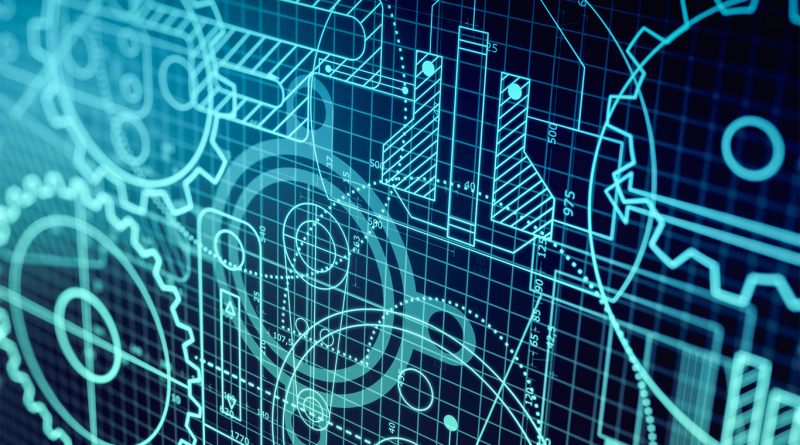AI-Powered Engineering: Visualising the Future Workspace
The advent of artificial intelligence engineering is not just an upgrade to existing methodologies; it’s a fundamental reshaping of how industries conceptualise, design, and execute projects across various disciplines. From automotive to aerospace, AI-powered engineering tools are enabling unprecedented levels of efficiency and creativity.
Artificial intelligence is set to redefine the engineering landscape by integrating advanced computation and machine learning models into traditional processes. Industries that have begun implementing these technologies are not only speeding up their design processes but are also achieving greater accuracy and resource efficiency.. At its core, AI in engineering automates complex tasks that would typically require extensive human effort and time, such as data analysis, simulation, and testing.
The transformative impact of AI is particularly evident in the realms of machine learning and generative design. These technologies are not only automating routine tasks but are also enhancing the capabilities of engineers to predict outcomes and innovate with greater precision. For example, generative design algorithms can now produce multiple output solutions for a given design problem, which are optimised according to specific constraints and performance parameters.
Core Technologies Behind AI Engineering
A key player in this technological revolution is generative design, a form of AI that leverages algorithms to simulate a design process. This approach allows engineers to input design goals along with parameters such as materials, manufacturing methods, and cost constraints, and then generates multiple design alternatives. This technology is instrumental in sectors that require complex, innovative solutions like aerospace and automotive, where it can lead to significant reductions in weight, improvement in strength, and materials cost savings.
Moreover, digital twins — virtual replicas of physical entities — enable engineers to predict the performance of machines or components in real-time, making it possible to optimise operation and maintenance in ways that were unimaginable before. This capability is extended by AI to enhance the accuracy and speed of simulations, leading to better decision-making. For instance, companies like Altair are advancing digital twin technology by integrating it with AI to offer solutions that predict the real-world behaviour of products under various scenarios.
These technologies are underpinned by substantial developments in data analytics and high-performance computing, which are crucial for handling the vast amounts of data generated during the engineering process. AI algorithms require robust computing power to process data efficiently, and platforms like Microsoft’s Azure AI are pivotal in providing the necessary infrastructure to support these demanding computations.
Impact on Industry Standards and Practices
The incorporation of AI into engineering is not just about enhancing current practices but also setting new industry standards. For instance, AI-driven tools are enabling faster and more accurate predictions during the design phase, leading to significant reductions in development time and costs. Companies that leverage AI technologies in their engineering workflows, like those utilising Microsoft’s Azure AI, report a more streamlined integration between operational technology and information technology, resulting in accelerated product development cycles.
Moreover, the competitive edge provided by AI is compelling even traditionally slower-to-adapt sectors to overhaul their methodologies. In manufacturing, for example, AI technologies are being deployed to predict equipment failures before they occur, significantly reducing downtime and maintenance costs. These predictive capabilities are fundamentally changing how maintenance schedules are planned and executed, shifting the industry from reactive to proactive management.
Despite the benefits, the integration of AI-powered engineering does not come without challenges. One major concern is data security. With industries relying more heavily on digital technologies, the risk of data breaches and cyber-attacks has increased. Organisations must implement robust cybersecurity measures to protect sensitive information related to their engineering projects.
Ethical considerations also play a critical role, especially concerning the potential for job displacement as AI takes over tasks traditionally performed by humans. The engineering sector must navigate these changes responsibly, ensuring that AI complements human workers rather than replaces them. Educational institutions and industry leaders are increasingly focusing on upskilling current workforces to work alongside AI technologies, preparing them for a future where human-AI collaboration is the norm.
The future of AI in engineering is bound to unfold with even greater integration and innovation. Initiatives like MIT’s AI Hardware Program signify the ongoing advancements in AI technology, aimed at creating more efficient, powerful, and sustainable systems. These developments suggest a trend towards even more sophisticated AI capabilities, potentially transforming every facet of engineering from the ground up.
As AI tools become more advanced, they will enable engineers to tackle increasingly complex projects, such as those involving intricate systems or extreme environments like space or deep-sea applications. The future may also see AI playing a crucial role in addressing global challenges such as climate change and resource scarcity by optimising systems for energy efficiency and reduced material waste.
Sources:
